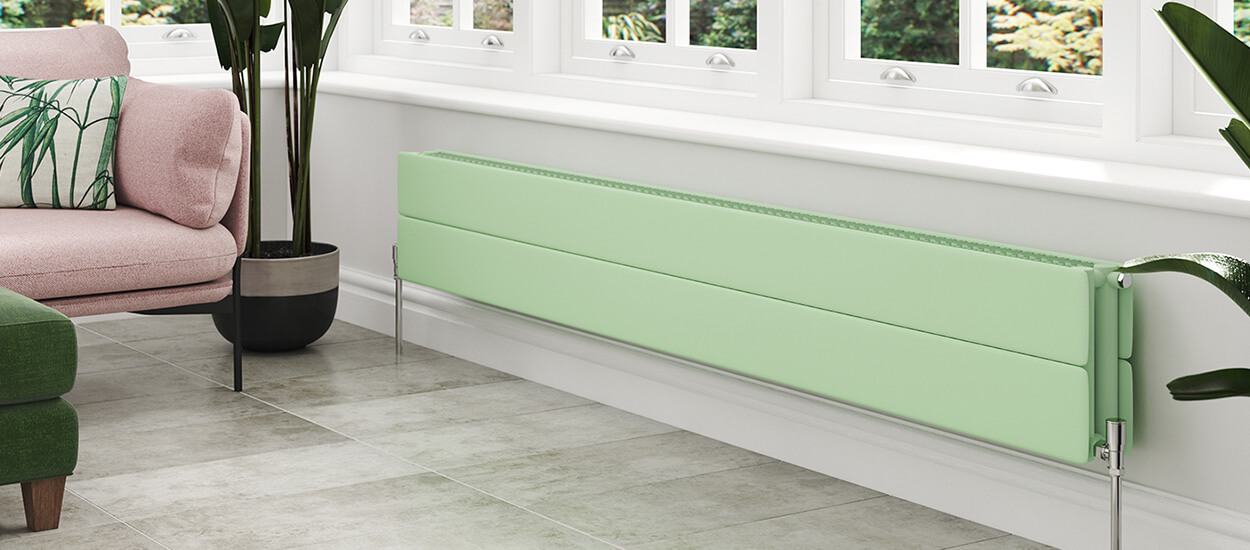Taking care of your radiators is important to ensure that they can supply high-quality heating to your home. Sometimes, radiators need a bit of attention and can require repairs if something goes wrong. You might find that an issue with your home heating system requires you to drain your radiator. Whether that’s to remove it, replace it or stop a leak, it may mean you have to turn it off for the sake of your carpet! Whatever the reason may be, knowing how to drain a radiator system is beneficial. Here are a few steps to help you do this.
Before you start
Before you can begin to drain a radiator, you should turn the switch off on your main boiler control panel and wait for the pipes to cool down. Most homes in the UK are heated with warm water from the boiler that flows to the radiators around the home through the pipes. Thankfully, if you find that one of your radiators is causing issues, it will have its own connection, so won’t affect the others in your house.
There are a few things that you need to have on hand before you can start the process of draining your radiator, such as:
- An adjustable spanner
- Grips or pliers
- 2 containers to catch any water
- A few old towels
-
Turn off your central heating
This is one of the most important steps when you want to drain a radiator system. Completely switching off your heating is essential before working with your radiators so that you won’t burn yourself on the water being drained. Waiting for at least an hour before you begin will ensure that the water has had enough time to cool off and will be safe enough for you to work with.
-
Closing The Valves
Once the water in your radiator has cooled down sufficiently, you need to close your radiator’s thermostatic valve, also known as the TRV. You can do this by turning it down to zero. When you’ve done this, move to the other side of your radiator and close the lockshield valve. Remove the plastic cap which will then expose the valve. Take your grips or pliers and turn it clockwise. Whilst you’re doing this, make a note of how many turns it takes to close – this can help you to keep your radiators balanced in the future, when reconnecting them or adding a new one.
-
Loosen your radiator’s TRV nut
You’ve turned off both valves, so now you can start disconnecting your radiator. This is where your towels and containers come in. Place your old towels around the thermostatic valve and make sure you place a large container below it to catch any water that may come out. Get your pliers and hold the valve, whilst using your spanner to loosen the nut that is connected to the radiator. As you do this, water will begin to flow out of your radiator, so it is essential that you have your towels and containers in place before you begin. When the nut is loosened, open the bleed valve with your radiator key – allowing air into the radiator whilst you are draining it allows water to flow out more easily.
-
Loosen your radiator’s lockshield nut
Move to the other side of your radiator and do the same with your lockshield valve, make sure that you’ve got your towels and containers ready. Loosening the nut with your spanner means that you can tilt your radiator to one side and drain the rest of the water out. Once you’ve successfully emptied any remaining water or sludge, your radiator should be fully drained.
Knowing how to drain your radiator will allow you to fix your heating problems without the need for a plumber and is a good way to make sure your home can stay warm and cosy all year round.
Standard steel radiators are timeless and tend to be reliable for the most part but are not without the occasional issue now and again. Some problems that you might come across with your radiators that may result in needing to drain them are as follows:
Your radiator is cold at the bottom
Being aware of how your radiator heats up day-to-day is a good way to spot if it is heating effectively. If you notice that your radiator is cold at the bottom, resulting in your room not heating up as you’d like, this may mean sludge has formed and is causing a blockage. A radiator blockage means that the water cannot flow through it freely. Draining your radiator can be a solution for flushing out the sludge that has formed and getting your radiator back to heating your home as it should.
Removing a radiator
You’ll need to drain a radiator before you can remove it, either to make way for a new product or if you’re decorating. Draining and removing your radiator before painting means that you can give it a new coat of paint with ease, and you don’t have to worry about the heating coming on when you’re painting!
For more on how to drain a radiator or to find the latest designer radiators for every room of your home, please get in contact today.

